Sarah Albee's Blog, page 7
January 4, 2016
Motor Trends
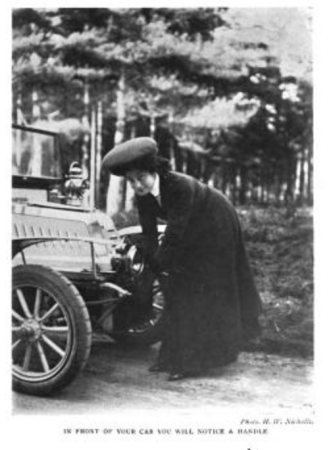 I just stumbled across a fascinating book called The Woman and The Car: A Chatty Little Handbook for all Women Who Motor or Who Want to Motor by Dorothy Levitt, written in 1909 (and available on Google Books here).
I just stumbled across a fascinating book called The Woman and The Car: A Chatty Little Handbook for all Women Who Motor or Who Want to Motor by Dorothy Levitt, written in 1909 (and available on Google Books here).
It’s worth a click through, but here are some highlights. In the chapter called “The All-Important Question of Dress,” the author shares the following tips:
I would advise shoes rather than boots as they give greater freedom to the ankles and do not tend to impede the circulation, as a fairly tightly laced or buttoned boot would do, but this is a matter of individual taste. In winter time it is advisable to wear high gaiters, have them specially made, almost up to the knee. (24)
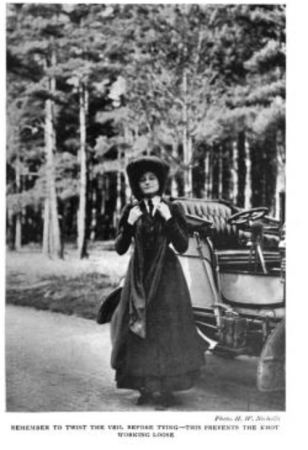 And what to wear on your head?
And what to wear on your head?
As to head-gear, there is no question: the round cap or close-fitting turban of fur are the most comfortable and suitable, though with the glass screen up it is possible to wear an ordinary hat, with a veil round it. (26)
And:
Indispensable to the motoriste who is going to drive her own car is the overall.
Here’s Dorothy wearing her overall.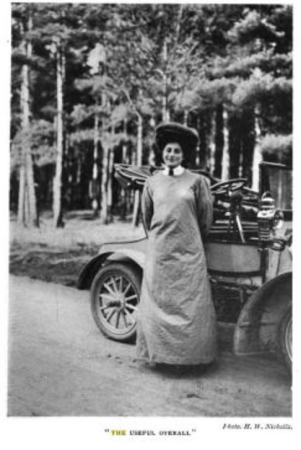 In her chapter called “Motor Manners,” she lays out some rules of the road. Drivers should avoid pedestrians, she acknowledges, but:
In her chapter called “Motor Manners,” she lays out some rules of the road. Drivers should avoid pedestrians, she acknowledges, but:
Dogs, chickens and other domestic animals at large on the highway are not pedestrians, and if one is driving at a regulation speed, or under, one is not responsible for their untimely end.
And then there’s this:
If you have a syren fitted to your car, do not sound it in a town or village. A syren is really only necessary for Continental driving.
I should have mentioned that Ms. Lytton is British. The British and the French haven’t seen eye-to-eye since the Battle of Hastings. I imagine her use of the “syren” probably didn’t go over very well on the Continent.
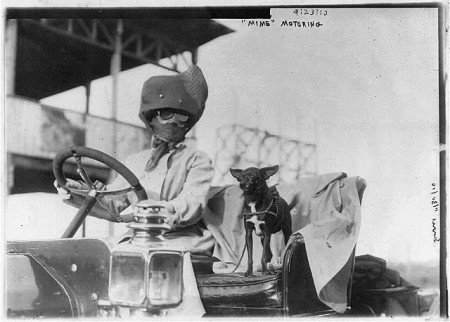
This one’s from Library of Congress–one of my favorite driving costume pix
The post Motor Trends appeared first on Sarah Albee.
December 6, 2015
Happy Holidays!
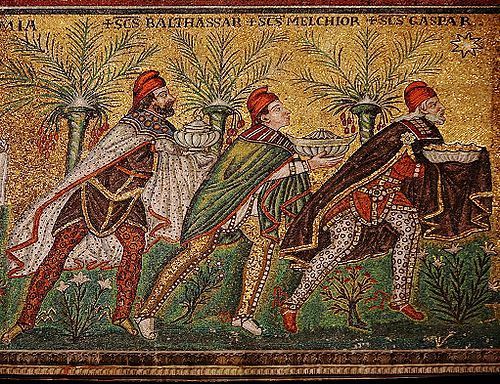 Happy Holidays! As today is the official first day of Chanukah, I have decided today is the perfect day to begin my holiday blogging break. I’ll be away for the next couple of weeks, because I have a book to finish (and a new one to start), but will resume my regularly-scheduled blogging on January 4th. Happy Chanukah, Merry Christmas, and Happy New Year to all.
Happy Holidays! As today is the official first day of Chanukah, I have decided today is the perfect day to begin my holiday blogging break. I’ll be away for the next couple of weeks, because I have a book to finish (and a new one to start), but will resume my regularly-scheduled blogging on January 4th. Happy Chanukah, Merry Christmas, and Happy New Year to all.
The post Happy Holidays! appeared first on Sarah Albee.
December 5, 2015
That’s Classic
 This is poison hemlock, or Conium maculatum. Its leaves look a lot like flat-leaf parsley, don’t they? That was too bad for one man, a Scottish tailor named Duncan Gow. In 1845 his children made him a sandwich for his lunch using what they thought was wild parsley. It turned out to be poison hemlock, and Gow died. His death recalled that of another, more famous person who died by hemlock, the philosopher Socrates (ca 469 – 399 BCE).
This is poison hemlock, or Conium maculatum. Its leaves look a lot like flat-leaf parsley, don’t they? That was too bad for one man, a Scottish tailor named Duncan Gow. In 1845 his children made him a sandwich for his lunch using what they thought was wild parsley. It turned out to be poison hemlock, and Gow died. His death recalled that of another, more famous person who died by hemlock, the philosopher Socrates (ca 469 – 399 BCE).

The Death of Socrates in a 1790s rendition by Jean François Pierre Peyron
Socrates was sentenced to death for refusing to recognize the gods approved by the state, and for “corrupting the youth.” He was ordered to drink poison hemlock. According to an eyewitness account written by Plato, Socrates’s death was a gentle one, surrounded by his devoted followers. After drinking the poison, his feet went numb, and the paralysis slowly crept upward. “His legs grew cold and stiff,” and after that, his respiratory muscles became paralyzed. His mind remained clear to the end, though. His last words were “Crio, we owe Asklepias a rooster. Pay the debt and do not forget it.”
For some time, historians had debated whether Plato’s account of Socrates’ death was medically accurate. They didn’t believe that death by hemlock could have been as peaceful as Plato said it was. But Duncan Gow’s symptoms sound remarkably similar to those of Socrates.
So it seems Plato’s account may have been medically accurate.

Not a great picture, sorry, but it was exciting to see actual poison hemlock at the poison plant garden at Cornell University.
The post That’s Classic appeared first on Sarah Albee.
December 3, 2015
Bark Like an Egyptian
 Thinking of acquiring a new dog? In a , I helpfully provided you with suggestions for what to name it, based on a medieval hunting manual. Today, I provide you with further suggestions, this time based on what ancient Egyptians named their dogs.
Thinking of acquiring a new dog? In a , I helpfully provided you with suggestions for what to name it, based on a medieval hunting manual. Today, I provide you with further suggestions, this time based on what ancient Egyptians named their dogs.
Here is a list*:
Good Herdsman
Reliable
Blackie
One Who is Fashioned as an Arrow
First, Second, Third, Fourth, (etcetera)
Grabber
Cook-pot
She of the Town
Useless
I’m wondering if some of these lost a bit of pizzazz in translation.
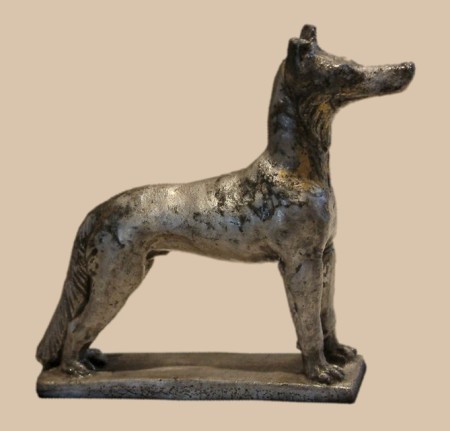
source: Guillaume Blanchard, via Wikimedia
*from Mary Elizabeth Thurston, The Lost History of the Canine Race, Andrews and McMeel, 1996, page 29
The post Bark Like an Egyptian appeared first on Sarah Albee.
November 28, 2015
Back in the Saddle
This is my son Sam. This is Napoleon:
This is Napoleon: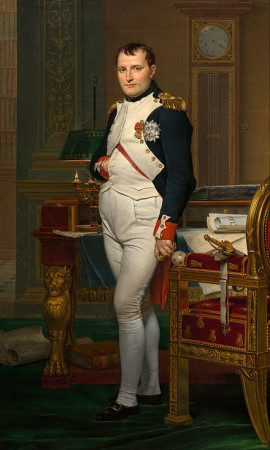 What do they have in common, besides a predilection for tight pants? (To be fair, Sam’s are made of Lycra and he wears them under his uniform.) On Wednesday, Sam woke up with foot pain, after having played in a game the previous night. Conveniently, his Uncle Jamie arrived just a few hours later for Thanksgiving. Uncle Jamie is a top-ranked orthopedic surgeon from Portland, Maine. Jamie set up his examination room in our man cave, with many aunts, uncles and cousins observing. Here we all are:
What do they have in common, besides a predilection for tight pants? (To be fair, Sam’s are made of Lycra and he wears them under his uniform.) On Wednesday, Sam woke up with foot pain, after having played in a game the previous night. Conveniently, his Uncle Jamie arrived just a few hours later for Thanksgiving. Uncle Jamie is a top-ranked orthopedic surgeon from Portland, Maine. Jamie set up his examination room in our man cave, with many aunts, uncles and cousins observing. Here we all are: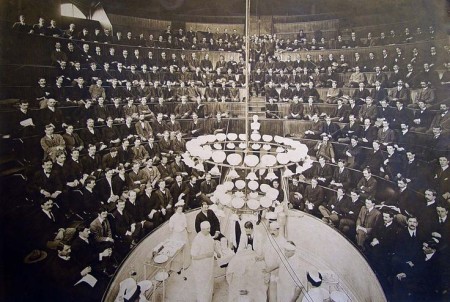 Jamie explained that the affected part of Sam’s foot was the tarsometatarsal joint. He diagnosed Sam’s foot pain as a “Lisfranc injury.” Luckily it isn’t a serious version of it. Here’s what Jamie told Sam:
Jamie explained that the affected part of Sam’s foot was the tarsometatarsal joint. He diagnosed Sam’s foot pain as a “Lisfranc injury.” Luckily it isn’t a serious version of it. Here’s what Jamie told Sam:
The injury is named after Jacques Lisfranc de St. Martin (1790 – 1847), who was a French field surgeon in Napoleon’s army. He named it after observing the injuries of soldiers thrown from their horses in battle with their feet still in the stirrup. Ouch.
I imagine it’s pronounced “Lee-FRAHNC” but Jamie says up in Maine they say “liss-FRANK.” Luckily Sam reports it’s feeling much better and he’s back on the court.
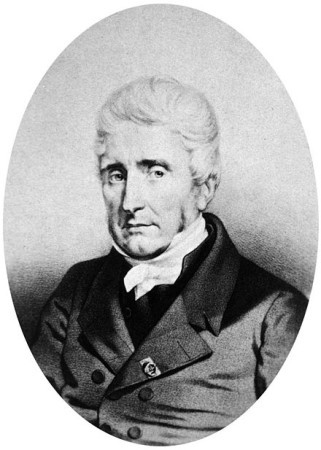
Lisfranc, who had excellent hair
The post Back in the Saddle appeared first on Sarah Albee.
November 18, 2015
NCTE 15
Hello, friends, I’m off tomorrow to Minneapolis and the annual NCTE (National Council of Teachers of English) convention. Here’s where I’ll be Friday afternoon at 4 pm: And here’s where to find me on Saturday, at 9:30 am:
And here’s where to find me on Saturday, at 9:30 am:

Hope to see some of you there!
The post NCTE 15 appeared first on Sarah Albee.
November 15, 2015
More Author-izing
In the past week I’ve visited four cities, attended two book festivals, given three talks, and conducted eight writing workshops. I love my job.
Last Friday I attended the American Association of School Librarians in Columbus, Ohio. My fellow nonfiction author, Loree Griffin Burns, and I co-presented a talk about research called To the Library . . . And Beyond!

Me and Loree
I then hopped into a car and drove from Columbus to Rochester, New York, where I attended the amazing Rochester Children’s Book Festival. It’s a wildly popular annual event and the organizers and volunteers do an incredible job. I was one of 45 authors and illustrators who attended and presented.

Pic snapped by my next-door-table-neighbor pal, Chris Tebbetts
On Monday and Tuesday, I visited the Essex Elementary School in Centerbrook, Connecticut, for two full days of writing workshops with fourth, fifth, and sixth graders. The kids did a series of exercises and small group activities that focused on revision strategies. They were incredibly enthusiastic, eager to volunteer and share, and came up with fun and imaginative writing.

Some of the kids presenting their work (used with permission)
And yesterday, I attended the Central Massachusetts Children’s Book Festival. Besides signing books and getting a chance to chat with kids, parents, and teachers, I had the pleasure of being on a panel with fellow nonfiction authors Tanya Lee Stone, Melissa Stewart, Heather Lang, and Joannie Duris. It’s been a wonderful week, and it’s not over yet. Next stop, the National Council of Teachers of English (NCTE) annual convention in Minneapolis!
It’s been a wonderful week, and it’s not over yet. Next stop, the National Council of Teachers of English (NCTE) annual convention in Minneapolis!
The post More Author-izing appeared first on Sarah Albee.
November 9, 2015
Underwear Under There
I stumbled across a magnificent illustrated manuscript from around the year 1500. It’s exciting because it shows men in their underwear. Wait, that might have sounded a little wrong.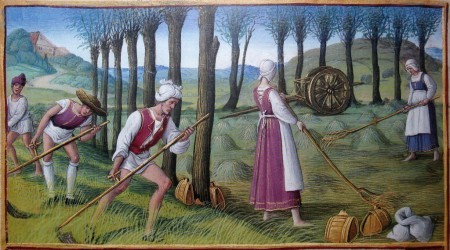 What I mean by “exciting” is that it’s hard to find pictures of underwear from the Renaissance period.
What I mean by “exciting” is that it’s hard to find pictures of underwear from the Renaissance period.
The illuminated manuscript was illustrated by the artist Jean Poyer. It’s called The Hours of Henry VIII because King Henry of England may or may not have once owned it. (You can find the full version here, at the Morgan Library.)
But back to the underwear. First of all, women didn’t wear any. They wore a chemise under their dresses and stays, but no drawers. You can see their chemises in the picture–their white sleeves and necklines are their chemises, worn under a bodice and skirt. Men wore chemises, too, and these often doubled as underwear insofar as the man might hike it up and through his legs. But men also sometimes wore braies, a kind of early boxer-type drawers. Here’s Folio IV, “The Reaping.” From a distance It’s hard to tell if these field workers are wearing bunched-up chemises or braies.
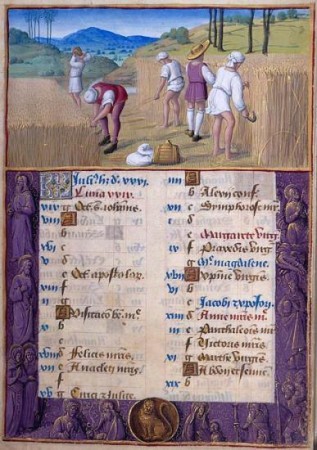 I think they might be chemises:
I think they might be chemises:
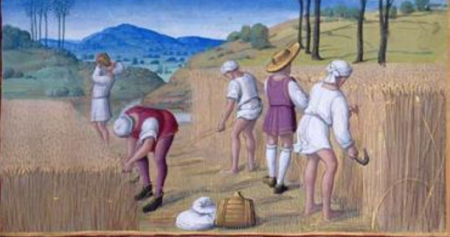
What do you think?

Hours of Henry VIII, in Latin, Illuminated by Jean Poyer France, Tours, ca. 1500 The Pierpont Morgan Library, Gift of the Heineman Foundation, 1977
The post Underwear Under There appeared first on Sarah Albee.
November 5, 2015
Author Events
 I will be doing a lot of traveling over the next two weeks. On Friday, November 6th, I will be copresenting with Loree Griffin Burns at the American Association of School Librarians’ Annual Conference in Columbus, Ohio. Here’s a description of our talk. I’ll be signing books directly after.
I will be doing a lot of traveling over the next two weeks. On Friday, November 6th, I will be copresenting with Loree Griffin Burns at the American Association of School Librarians’ Annual Conference in Columbus, Ohio. Here’s a description of our talk. I’ll be signing books directly after.
To the Library … and Beyond
In this workshop, two award-winning nonfiction authors share their creative approaches to research, suggesting simple ways teachers and librarians can adapt professional methods for student writers.
Our talk is at 11:20 am. Check the conference handbook for room location information.
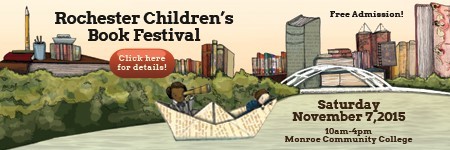
On Saturday, November 7th, I will be one of the authors participating in the Rochester Children’s Book Festival, which is from 10 to 4. I hope you will stop by to say hello if you are in the area!
The post Author Events appeared first on Sarah Albee.
November 3, 2015
Death by Voting?
Update: Today is election day, and although most people are focusing more on the Presidential election next year, there are many important state and local decisions to be made. In honor of Election Day I am re-posting this blog about the death of Edgar Allan Poe that I wrote a couple of years ago.
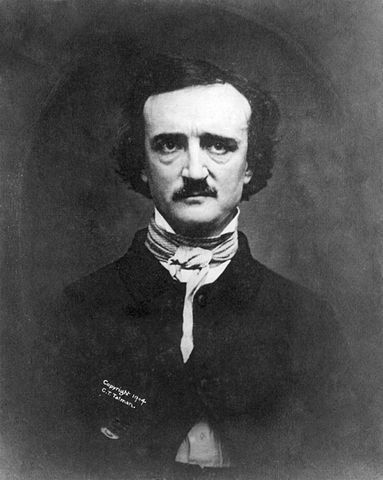 On the eve of the election I am sure you’re as weary as I am of voter intimidation stories, suspiciously long early voting waiting lines, and Super-PAC-funded negative advertising. But nineteenth century political campaigns make these things look tame by comparison. Today’s blog is about certain 19th century election practices, and how they might relate to the mysterious circumstances surrounding the death of the author Edgar Allan Poe.
On the eve of the election I am sure you’re as weary as I am of voter intimidation stories, suspiciously long early voting waiting lines, and Super-PAC-funded negative advertising. But nineteenth century political campaigns make these things look tame by comparison. Today’s blog is about certain 19th century election practices, and how they might relate to the mysterious circumstances surrounding the death of the author Edgar Allan Poe.
When I was a teenager I went through a major Poe phase, but it wasn’t until recently that I learned that the cause of his death, in 1849, was almost as mysterious and eerie as some of his stories. The three prevailing theories to explain the cause of his death are alcohol, rabies, and cooping. I’ll explain.
Here’s what we know: Poe struggled with alcohol for much of his adult life, and also with money problems. At the end of June, 1849, he began a lecture tour to raise money for a new magazine. He traveled to Philadelphia, Richmond, and Norfolk, Virginia. On September 27th, he took a boat from Richmond to Baltimore, but his subsequent whereabouts over the next few days are shrouded in mystery. He resurfaced on October 3rd, when a man named Joseph Walker discovered him outside a tavern and sent a note to Doctor J.E. Snodgrass, reporting that a gentleman had been found “rather the worse for wear,” in evident distress. Poe was delirious, and presumed to be in a drunken state, and sent on to Washington College Hospital.
Over the next four days, he lapsed in and out of consciousness and delirium, incoherent and unable to explain what had happened to him. He died four days later. He was forty years old.
So one explanation, the prevailing one for many decades, is that he was intoxicated and died of some sort of alcohol poisoning, But where that doesn’t really hold up is that he remained in the state of hallucinatory incoherence for four days, and refused offers of alcohol in the hospital (yeah, that’s about the best thing hospitals had to offer to sick people back then). One reason to explain the extended delirium is that he might have ingested a combination of alcohol and laudanum (he’d almost died of that combination a year before, whether from accidental overdose or a suicide attempt).
The second explanation comes from a paper published in 1996, by Dr. Michael Benitez, a cardiologist at University of Maryland Medical center. He suggested rabies may have killed Poe. Symptoms of rabies can take up to a year to appear, but once they do, the patient dies within a few days. Benitez cited as support for the rabies theory the fact that Poe refused water in the hospital. Hydrophobia (fear of water) is a symptom of rabies. But other sources claim Poe did drink half a glass of water, so without evidence of hydrophobia, the rabies theory is pretty slim. Others who subscribe to the disease explanation say that Poe might have been ill from cholera or tuberculosis or epilepsy.
And finally, there’s the cooping theory. I had to research this term. Cooping was a tactic used by crooked officials to sway voting, and was especially notorious in Baltimore during the 1840s and 50s (smack-dab during the time of Poe’s death). Political thugs not only bribed judges and stole ballots to get their candidates elected. They also resorted to kidnapping, beating, and murder. “Coopers” were known to have kidnapped innocent bystanders (always white males—the only ones who could vote), and hold them in a room (or “a coop,”) where they were often drugged, plied with liquor, or physically beaten, and then forced to go from polling place to polling place, voting over and over again for a particular candidate. Often their clothes were changed to disguise them from being recognized at the polls.
I found several accounts in newspapers from 1849 and 1850 bemoaning the practice of cooping. Here’s just one, from the State Gazette (Trenton, October 14 1850):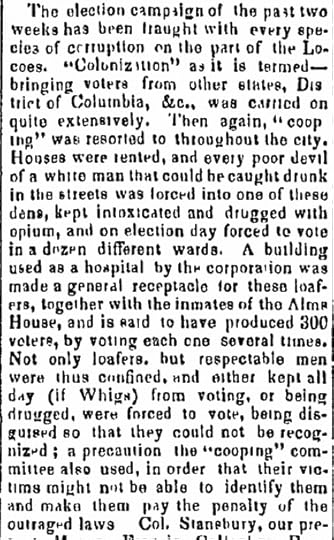 The day Poe was found happened to be election day, and the tavern outside of which Poe was found was also a voting place. And according to some accounts, when Poe was found he was wearing someone else’s clothing. Could he have been seized by a gang, plied with liquor, made to vote over and over again, and then turned out into the street?
The day Poe was found happened to be election day, and the tavern outside of which Poe was found was also a voting place. And according to some accounts, when Poe was found he was wearing someone else’s clothing. Could he have been seized by a gang, plied with liquor, made to vote over and over again, and then turned out into the street?
It’s a mystery.
Additional sources from the Poe Museum website: http://www.poemuseum.org/life.php
And from the Edgar Allan Poe Society of Baltimore website:http://www.eapoe.org
The post Death by Voting? appeared first on Sarah Albee.



